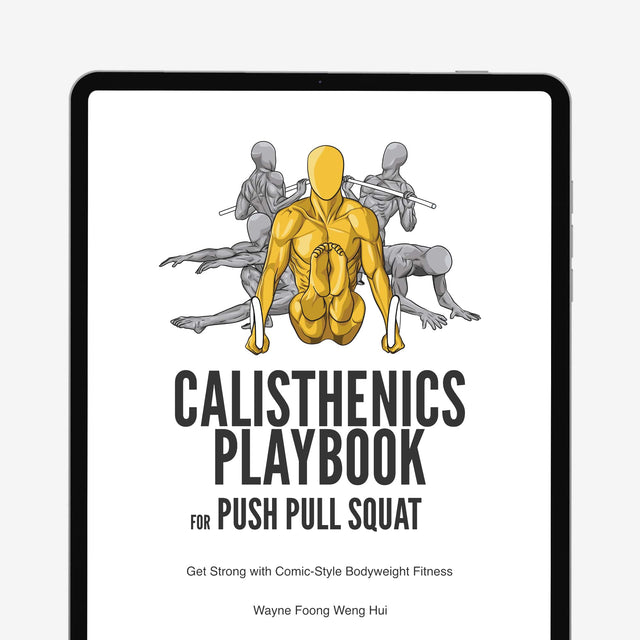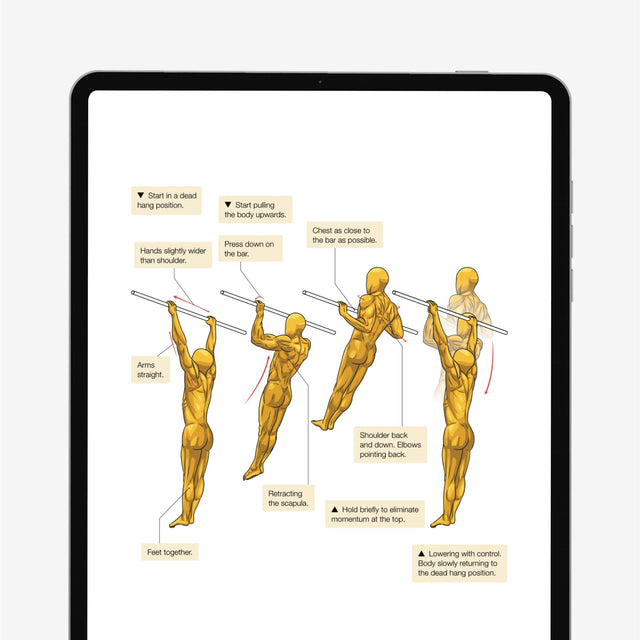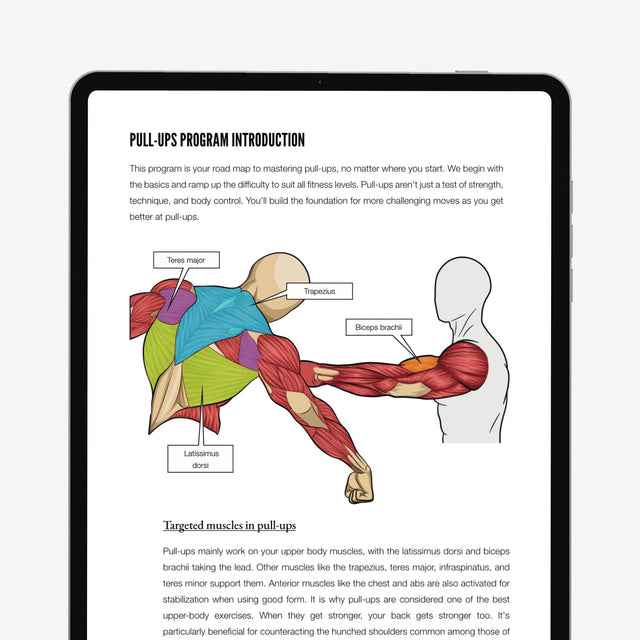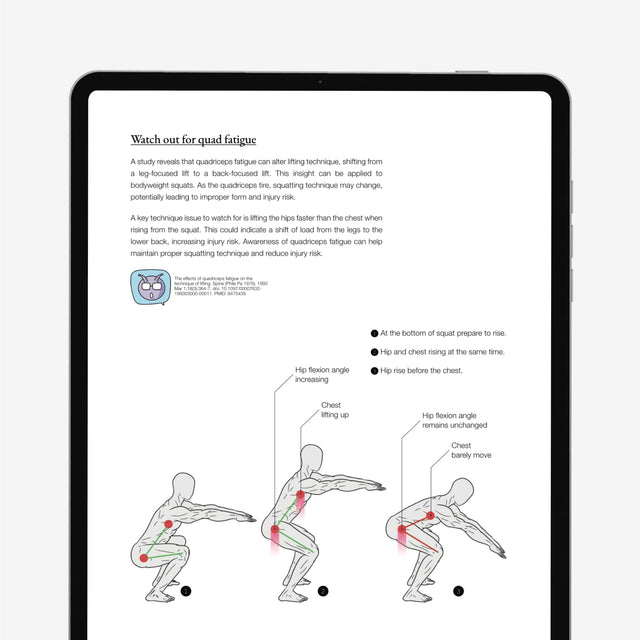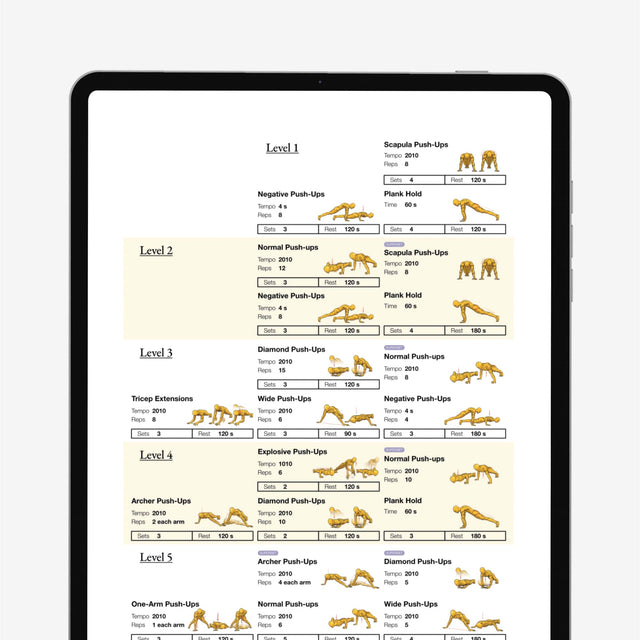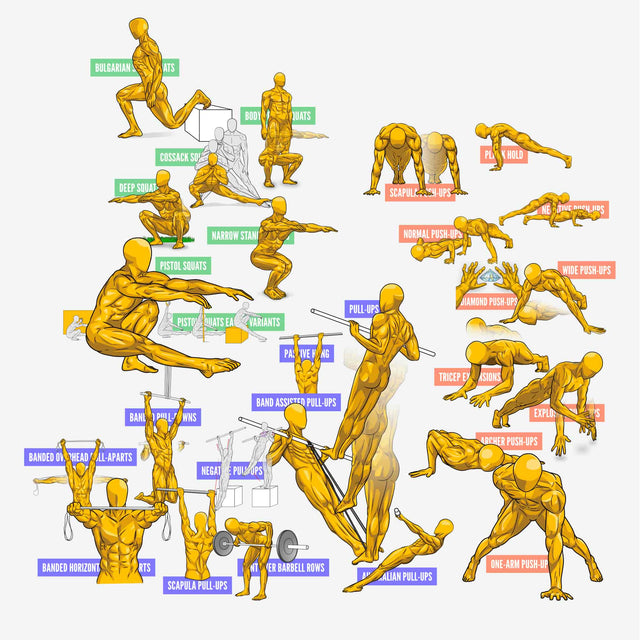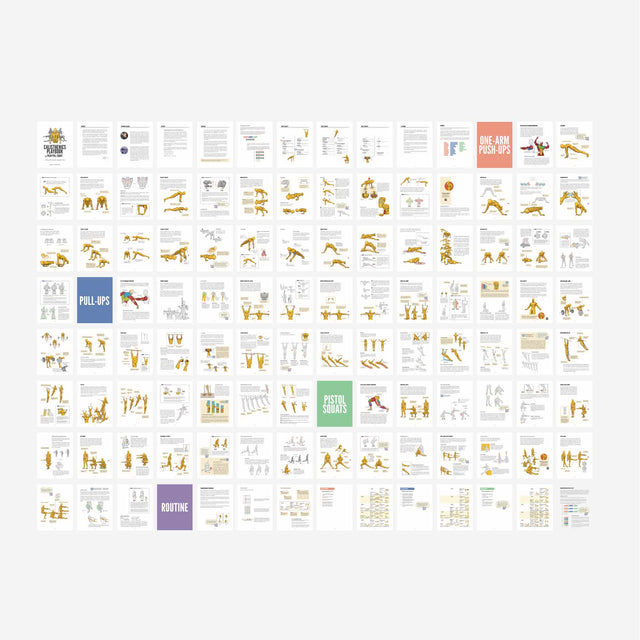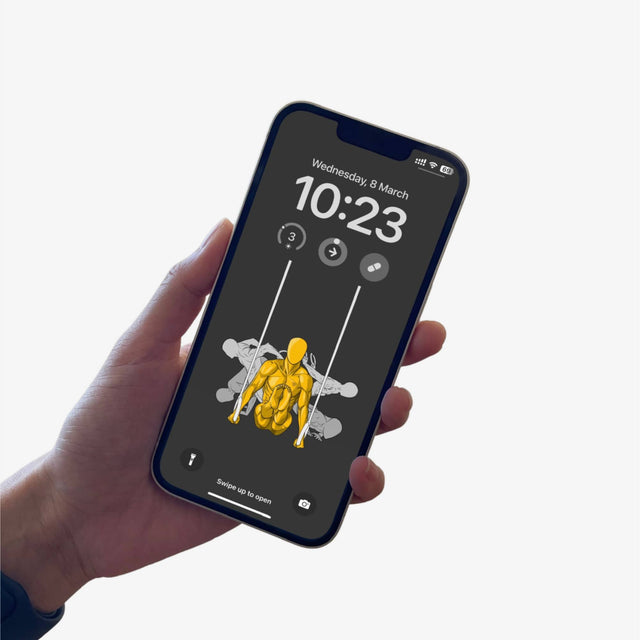How to Progress Your Bodyweight Training: Know Yourself and Pick the Right Skill
You're here to learn how progression works in bodyweight training. You'll know where you are, and what progression skill set is best for that level of progression. Plus, you can progress faster with less chance of injury!
In this blog post, we will be talking about the different levels of progression and providing a list of wonderful skill charts. The goal is to categorize skills into their respective difficulty level so you have an idea of which progression to pick from or chain together.
What is progression in bodyweight training
Bodyweight training is an exercise that is performed using your body weight as resistance and no equipment. They are also famously known as Calisthenics.
When we talk about progression, it usually means progressive overload. In bodyweight, training progression can be accomplished by using different levels of progression skills sets which will produce more stress to trigger growth in the muscle group that is being trained.
Some forms of progression include static progression- where the exercise is held for a specified amount of time, and dynamic progression- where movement is added after a set point.
How is progression different between calisthenics and weight lifting
You might have noticed progression being the same for both weightlifting and calisthenics, even though they're both different types of training. In weightlifting, progression is accomplished by adding more weight to an exercise through a progression of overload.
In calisthenics, however, it is not as straightforward. Progression occurs by:
- Adding training volume: adding more reps sets
- Increase intensity: Slow down the speed of movement, eliminate excessive momentum.
- Try harder move: Pull-up to explosive pull-up
We will focus on the harder move progression. Knowing what skill to put into your training routine is crucial.
Bodyweight progression charts to help you pick the right progression
You may find a dozen of calisthenics progression charts over the internet but here's what we think are the best.
Awesome bodyweight training skill tree
KNightNox from Reddit has made an astonishing bodyweight training skill tree. This skill tree compiles beyond the regular calisthenics exercises such as resistance training, plyometrics, isometrics, yoga poses, movement, and even martial arts.
To make the chart even more awesome, it was colored to reflect differently on each muscle group.
The creator does claim that he has no fitness-related background in the field and the chart is bound to errors. But we think this is useful enough to estimate our own fitness level. You can find the high-resolution image over here.
Always conduct your own research and execute the workout with good form.

Basic routine infographic poster
Startbodyweight has made a great bodyweight basic routine infographic poster. It has a progression chart with real-life pictures that plots your progression skill sets and how to chain them together for an effective workout routine.
The poster covers fundamental (but important) moves that everyone can start practicing including squats, pull-ups, leg raises, dips, plank, and more.

Bodyweight fitness progress chart
Another great progression chart from the Reddit bodyweight fitness community. This is inspired by the bodyweight bible's Overcoming Gravity by Steven Low and improved by the famous Recommended Routine from Reddit. Check out the original link as the creator seems to constantly update the chart.
This chart leaves out prerequisites to each skill for simplification of the original chart. It has built-in skill tree manner so the necessary prerequisites would be self-explanatory.
It's really humbling when you realize just how strong you have to push before attaining an "intermediate" skill. It also gives you a complete picture of how much you can shoot for in the future.
This chart is easy-to-follow, reasonably visualized, highly recommended for all of those who have never used one yet.

Original Exercise Charts from Overcoming Gravity
Get the original chart over Steven's website and here is the Google Sheet version of the chart.
The chart is all you'll ever need in terms of your calisthenics development. Steven has organized the chart into 16 distinct levels of strength and abilities.
Here are some tips on how to better utilize the chart:
- Make a copy of the sheet and it is yours
- Mark the skills that you have already unlocked with a new color. So you get an idea of where you are at.
- Record down what is the date when you mark it. Record what is your current progression data such as "3x10 muscle-up with 2 min rest" in new cells.
- Revisit your sheet on a weekly or biweekly basis for progression tracking.
Or even better(if you are old school), print the list out and make it a poster to look at every day. This is how you get motivated and stay on track.

You will learn what's your strength and weakness
As you look at the charts and track your abilities it may be noted that one area might be stronger than another, that's completely normal.
Depending on our genetics, limb lengths, training schedules, sleep patterns, nutritional concerns, or stress levels, we each have our own strengths and shortcomings. For example: if you’re tall and lanky you may find that human flag are very difficult for you because your arms are longer than they would be if you were shorter.
Focus on weaknesses instead of strengths
You are as strong as your limitation. Shoring up your weaknesses to meet your advanced skills or strengths is crucial. It is especially vital if there is a huge gap between pushing and pulling.
Naturally, we are stronger in the anterior chain (pushing) and weaker in posterior chain (pulling). The difference is enlarged via modern life habits like sitting for long hours in front of a desk. This could translate to a structural imbalance in long term and could bring terrible posture risk.
Muscle-up is a good instance as it is a combined move with pulling and pushing. You pull your body up explosively and push up on the bar to complete a rep. If you have the sheer pushing strength but lack the pulling force, you need to work to bring your pulling strength at least on par with pushing in order to complete the muscle-up.
You can progress faster with easier skills
There are many benefits for knowing which progression level you're currently at. The most important benefit is that progression can happen much faster than if you don't.
Knowledge of your overall ability level is important because the body will progress much faster at lower levels.
One progression technique is to try the progression one level below your current progression level for 6-8 weeks to get a feel for what that next progression feels like and then go back to progressing the normal way.
For example, if you are struggling of improving your explosive pull-up reps, then it is best that you focus on easier progression such as pull-up. Improving the max reps of pull-ups is going to facilitate your explosive pull-up.
When you know what progression to pick from or chain together, it is easier for you to make the progression skills more challenging while making sure that it's not too hard.
Not knowing the alternative exercise that can aid the speed to your goal, you are probably going to waste more time due to the lack of training volume. And if you are pushing your body too hard when it is not ready, bad things will happen.
You can level up with less chance of injury
By practicing on easier progression which your body and mind are more adapted to, you can level up much faster while reducing the chance of injury. This is a great way to keep your body injury-free and progressing well without overtraining it.
If you are trying to rush things, ligaments won't have the chance to strengthen up and your central nervous system will not get adapted enough for high-level skill work. Training too hard without proper progression could lead you into a plateau or an injury that stalls progression completely.
Wrap up
In conclusion, progression is vital to training success. If you are not progressing as quickly as possible and it feels like you're hitting a plateau or getting injured more often, know that there may be something else going on.
Progressing at the appropriate level for your abilities will allow progression to happen much faster than if you weren't aware of progression levels and stuck at one skill too long. The key is knowing which progression skills should come next in order to progress up the ladder with less chance of injury.
With any luck, this article has helped make sense of how progression works so that now every day can feel like an exciting journey towards new challenges!

